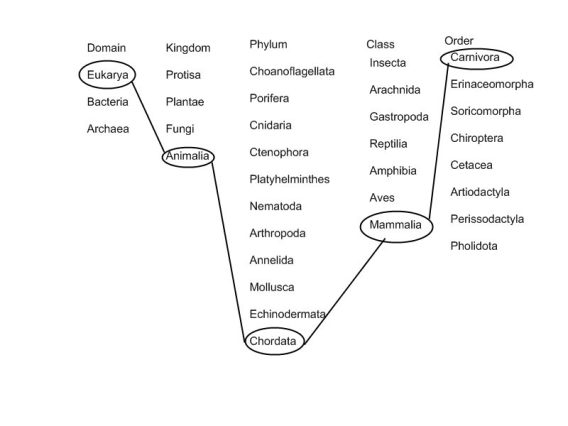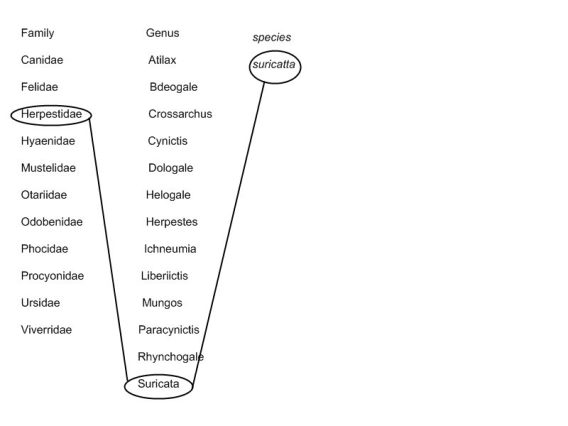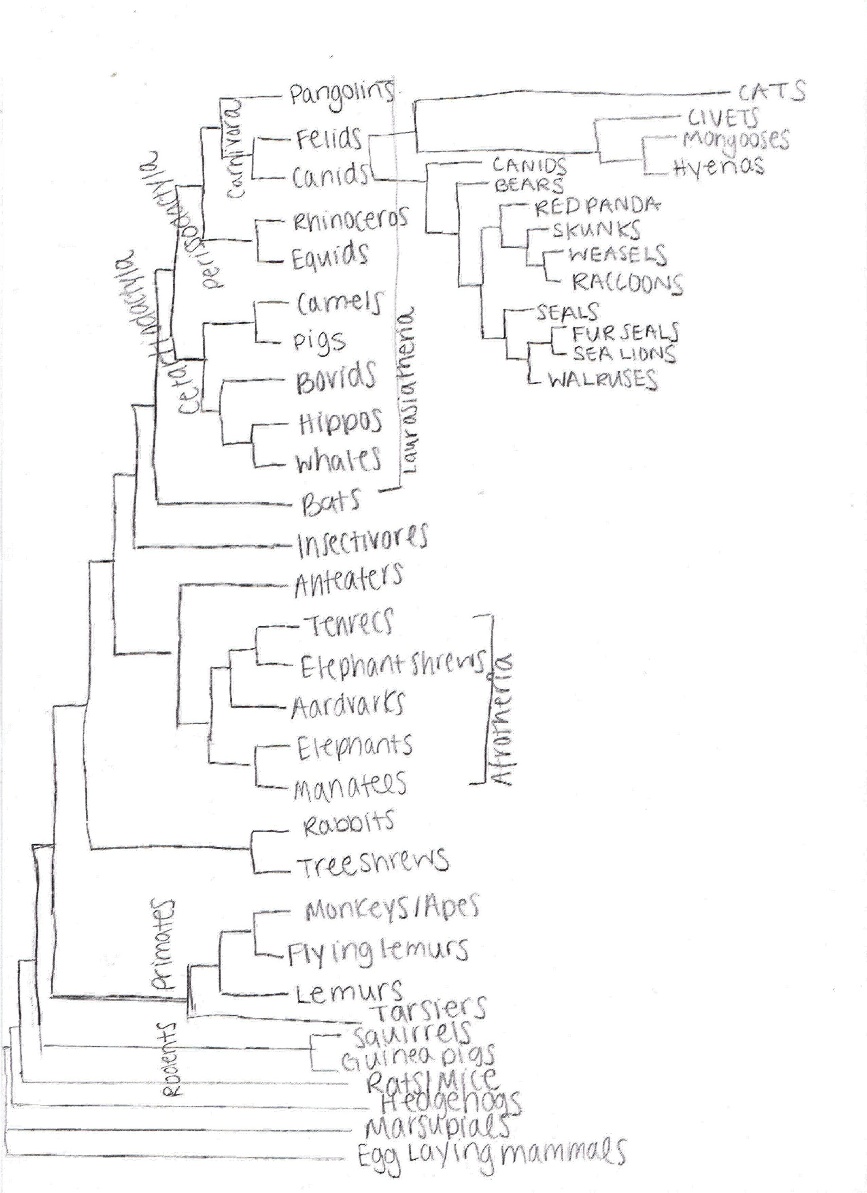 Classification and Phylogenetic Tree
Classification and Phylogenetic Tree

Classification For a little mood music click here!
Domain: Eukarya
Kingdom: Animalia

Phylum: Chordata
Subphylum: Vertebrata
Class: Mammalia
Order: Carnivora
Family: Herpestidae
Subfamily: Herpestinae
Genus: Suricata
Species:
Suricata suricatta

| Eukarya | Have cells organized into complex structures enclosed within membranes. The defining characteristic between a eukaryotic cell and a prokaryotic cell is the nucleus. Eukaryote means good/true in Greek. |
| Animalia | Meerkats are heterotrophic meaning they don't produce their own food. To be heterotrophic you digest the food in internal cavities. Also, they have no cell wall present. Meerkats are motile which separates them from the plants. Meerkats are also multicellular and develop as embryos. |
| Chordata | Has a backbone with a hollow nerve chord. At one point in time the meerkat had a pharyngeal pouch, endostyle which helps develop the thyroid gland, and a notochord which is a rod of cells. Also, the meerkat has bilateral symmetry, complete digestive system, and an endoskeleton. |
| Mammalia | Meerkats have the ability to feed their offspring with milk and have their bodies covered with hair. Also meerkats have three middle ear bones (malleus, incus, stapes) that are shared with all mammals. Another key characteristic of a meerkat as a mammal is a diaphragm. |
| Carnivora | All carnivores have four to five digits on each leg or arm. They also have sharp teeth that are designed to rip straight through flesh. Vision and a key sense of smell are characteristics that most carnivores have as a part of this order. Also, another key characteristic is the size of each organisms' brain. All Carnivora have anal glands that are used in various ways. Powerful jaws are present in these animals to hold and stab prey. |
| Herpestidae | All members of this family have long bodies, short and powerful legs, and a long bushy tail. Also, another trait that is essential to this family is that they carry a scent-marking gland that is near their cheek and their anus. They have short and round ears that are on a sloped forehead that meets with the muzzle. |
| Suricata | The only member of the Genus Suricata is Suricata suricatta. Therefore some characteristics are they like to burrow. Some characteristics of this genus is that they have great tools to be able to dig for a long time. They all have developed ears that can close to keep dust from entering their ears. Another great characteristic is that sharp eye sight where they can stare at a spot for a long time. |
Below is a Phylogenetic Tree that was drawn by me using two resources. I used a resource to complete this tree: "Carnivore Phylogeny." 18 Apr. 2008 <http://whozoo.org/mammals/Carnivores/carnivorephylogeny.htm>. I used there information to help develop my phylogenetic tree. I believe it is based off of morphological data. Each organism was chose because of how it looks compared with other species.

There are some phylogenetic trees that are on two websites that you should check out the first tree is here and the second tree is here! Check them out. Each phylogenetic tree was made by looking at the gene sequences. The first tree is based off of molecular data. The second tree is based off of molecular data as well.
Amanda Hustad Copyright © 2007, Design by: Sunlight webdesign